Despite the rather harsh conditions of the North-Western region of Russia, a joint scheme of cultivation was developed here by scientists and gardeners. thermophilic sweet pepper in open ground and greenhouses. The ability to create artificial conditions for seed germination and ripening of vegetables made the culture popular and easily accessible for residents of the cold region.
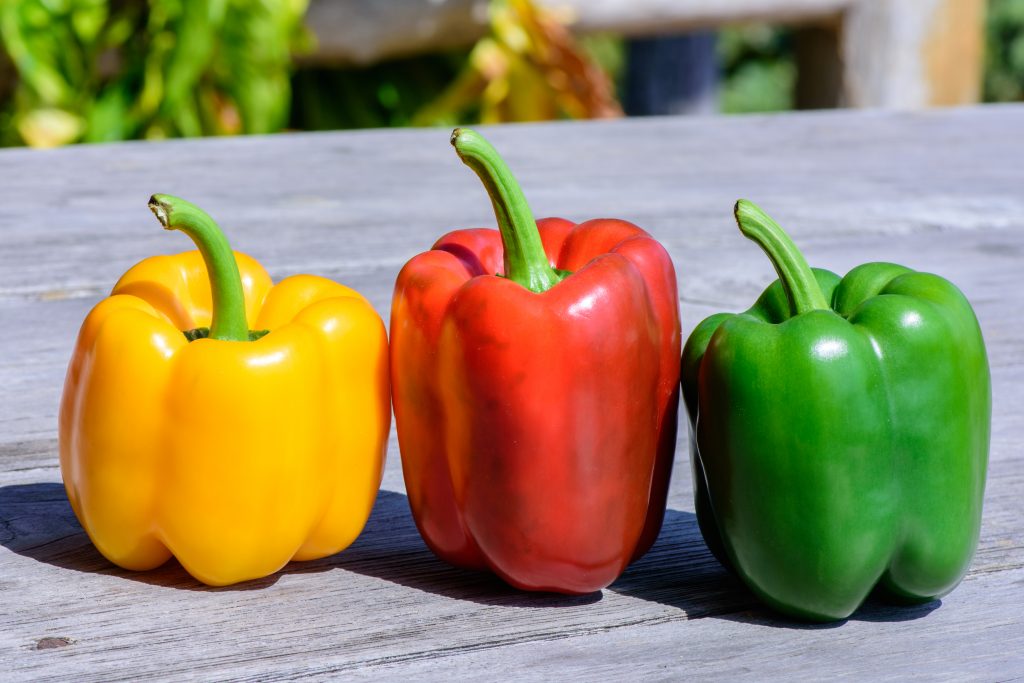
The main criterion for choosing a type of culture was the period of its ripening. Scientists were able to reduce it, while increasing the adaptive capacity of the plant, which allowed it to be planted in the beds, as well as to increase the productivity of bushes by using greenhouses.
Content
The principles of selection of varieties for the north-west of Russia, problems and growing conditions
Since climatic conditions make it impossible to plant crops in open ground in the spring months and this procedure should be postponed to the end of May and beginning of June, it is important to choose early ripening varietiesthat ripen before cold weather and give a good harvest.
It is preferable to plant low-growing varieties on the beds, and other types can be used in greenhouses, since in artificial conditions it is possible to regulate temperature and light.
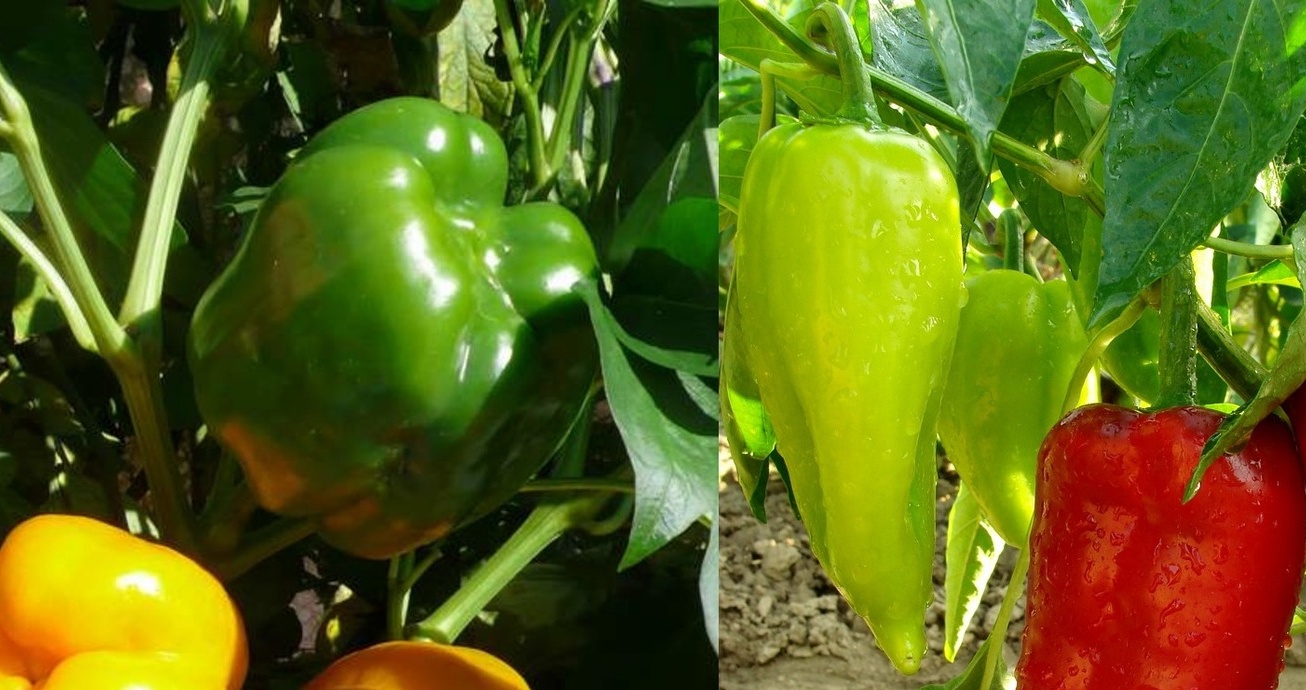
The climate of the north-west of the country is not suitable for such a thermophilic culture as pepper, but thanks to the cultivation of hybrid varieties and the availability of covering materials, this culture has become a regular guest in the beds and in greenhouses. To grow a vegetable, it is necessary to observe such parameters for growth:
- temperature conditions: air - 18-26 ° C, soil - 20 ° C;
- lighting - 35,000 lux;
- humidity -70-80%;
- soil acidity - 6.6 rN.
Accordingly, to comply with such indicators, it is necessary to moisten the culture in a timely manner, watering is done several times a week. Special devices are also used to create additional hours of daylight and temperature, which will allow you to successfully grow pepper.
If the conditions for caring for the plant are not observed, the following problems with it are possible:
- inhibition of growth at temperatures above 30 degrees and the death of the culture when the temperature drops below + 15 ° C for several days in a row;
- an increase in the growing season with a lack of light;
- low productivity, the fruits do not ripen completely and the ovary dies with a lack of water;
- lack of ovary and weak stems with a lack of nutrition.
It is also important to choose the right place in the garden or in the pepper greenhouse, as neighboring plants have a direct effect on the growth of the vegetable.It should not be planted in a place where last season there were cucumbers, an excess of nitrogen in such a soil will not benefit the culture. The vegetable is well adjacent to cabbage, tomatoes and various herbs.
The best varieties of pepper for 2019 for open ground in the north-west of Russia
Based on the weather conditions of the region in question, for ripening vegetables in the garden, it is necessary to choose early ripe and mid-ripening varieties that are suitable for an open method of growing.
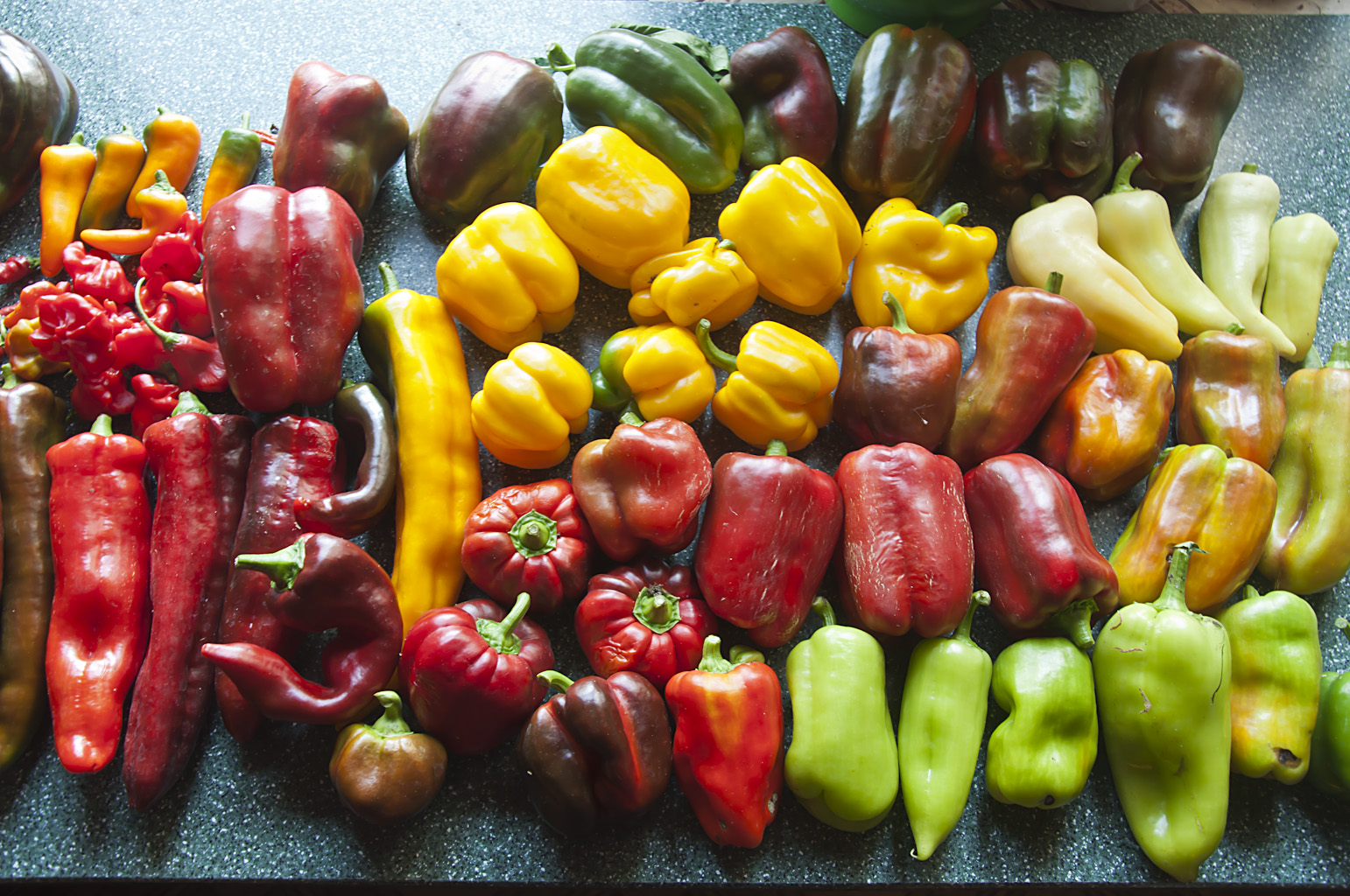 You may be interested in:
You may be interested in:Agapovsky
Early ripe pepper, which needs only 100 days to ripen. The bush is characterized by the presence of a large number of foliage. Peppers are large and prismatic, their mass reaches 120-130 g, and productivity from 1 m² - 10 kg. The vegetable has a juicy and dense pericarp, a slightly depressed peduncle, red color and excellent taste.
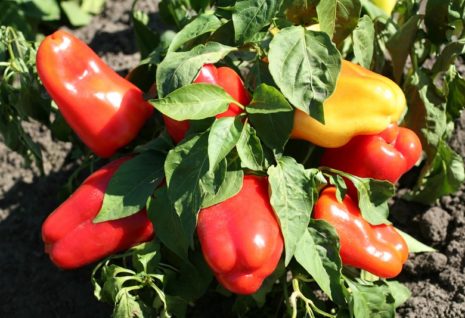
Pinocchio
An early hybrid whose biological maturity occurs after 120 days. The bush of the plant is sprawling, weakly branched. Ripe pepper turns red, in shape it is an elongated cone measuring 17 by 6 cm, weighing 80-120 g. Such a vegetable is resistant to various diseases and tolerates transportation well.
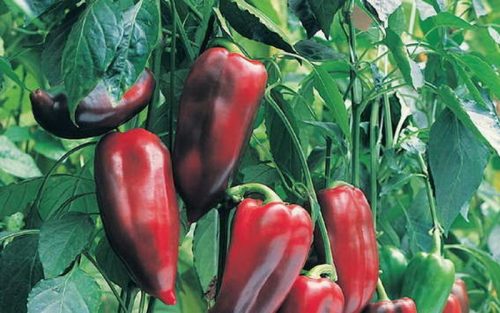
Eroshka
Early ripe variety, the height of the bush is small - 30-50 cm, but each grows up to 15 fruits. Pepper has a tetrahedral shape with slightly pronounced ribs. The ripening period is from 95 to 130 days. The fruit changes color from light green to red-orange, its size reaches 9-12 cm in length, the average weight is 150 g. It is well suited for the preparation of salads.
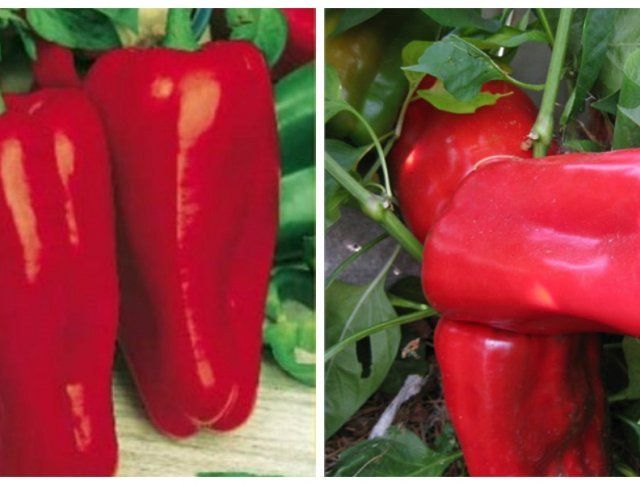
Health
A characteristic feature of this variety is a tall bush - 1.5-1.7 m. It is recommended to grow it on a trellis. Vegetable fully ripens in 95-110 days. The fruits are small: diameter - 5-6 cm, length - 10-12 cm, weight - 35-40 g. They have an elongated prismatic shape with a slightly noticeable waviness. The peel is thin, and the wall thickness is average, the yield from the bush is up to 5 kg.
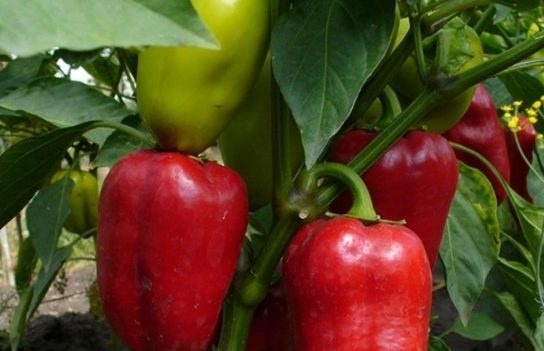
Lumina
A popular variety among summer residents and farmers, the fruits have a creamy tint in technical maturity and turn red with biological maturation, which occurs after 120 days. The length reaches 14 cm, the shape of the vegetable is conical, trihedral. Lumina well tolerates long-distance transportation.
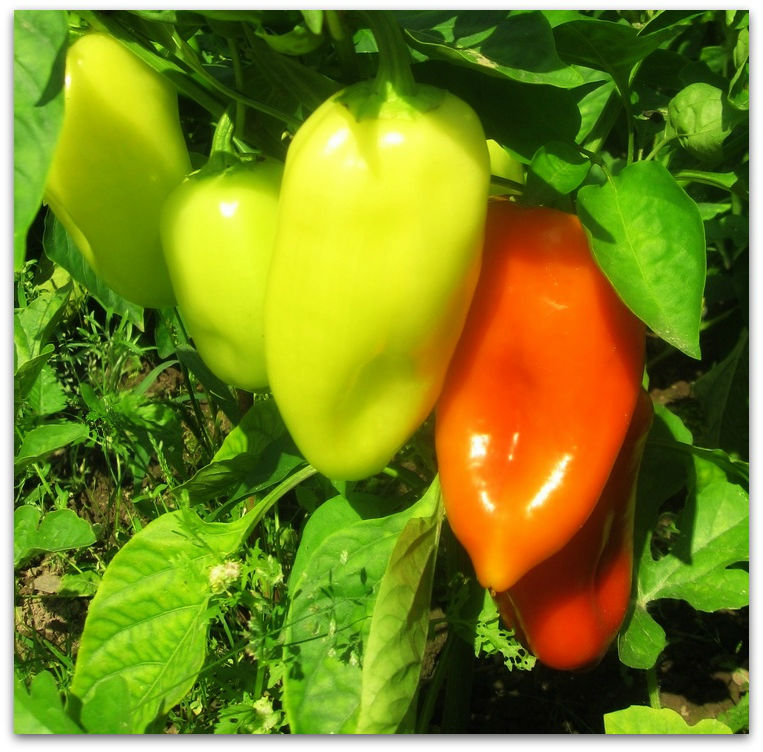
Tenderness
An unpretentious plant with soft peel of fruits, thanks to which the variety got its name. Bush up to 80 cm tall, gives about 2 kg of crop. The variety is medium early, the fruit ripening period is 115 days. Peppers have the shape of elongated pyramids, their length reaches 12 cm, and their mass is 100 g. When ripe, the fruit acquires a rich red color, has a sweet taste and is used to make salads, casseroles, and lecho.
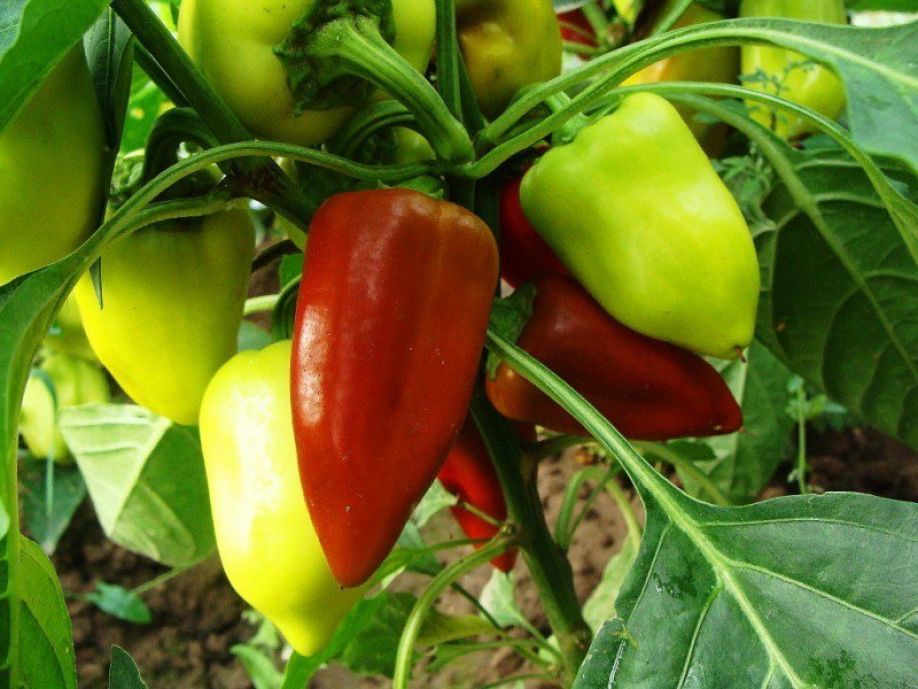
Marinkin tongue
Mid-ripening variety, ripens 120-135 days, the bush of the plant is asymmetric, up to 70 cm in height. Ripe vegetable acquires a cherry hue, and is elongated in shape and resembles a tongue. Weight is 170-220 g. On each bush you can collect up to 15 vegetables. Fleshy fruits with walls of different thicknesses.
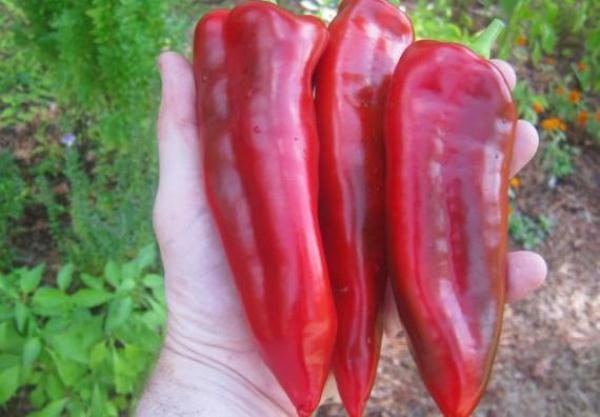
Gift of Moldova
An early ripening variety that has been popular with gardeners since the 70s of the 20th century due to its unpretentiousness. The bush reaches half a meter, and the fruits ripen for about 4 months. Pepper has a conical shape and a red tint after ripening, its mass is about 70 g, and the yield per square is 4-5 kg. Can be consumed in green.
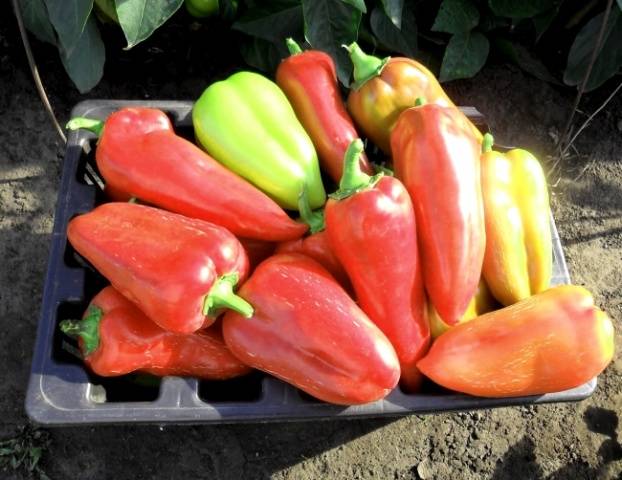
Snow flake
This hybrid grows with a standard bush 160-200 cm high, the foliage is dark green, egg-shaped. The color of the ripe vegetable is red, glossy, and the prismatic shape with bends, the peduncle is slightly depressed. The weight of each pepper is 70-120 g. Technical ripeness occurs on the 105th day.
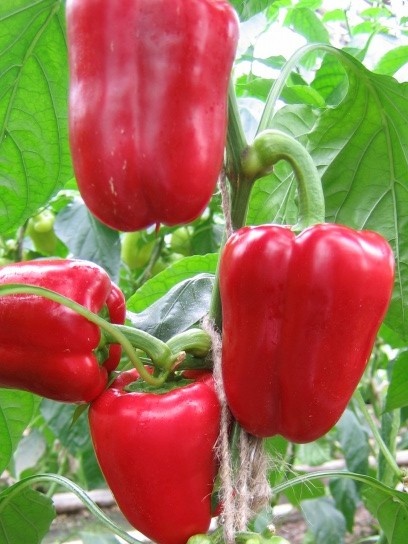
Czardas
Early ripe pepper, is a bush of a bouquet type, the height of which is 60-70 cm.Technical ripeness occurs after 95 days, biological - 115. The shape of the fruit is a cone, size - 15 × 7 cm, weight of vegetable - 170-220 g. Color depends on the ripening phase: from yellow to orange-red. Productivity is 8-10 kg per 1 m². The vegetable has good taste regardless of the stage of ripening.
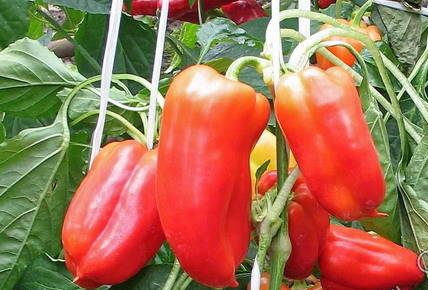
The best varieties for a greenhouse, or indoor soil for growing in the region
Thanks to the work of breeders, special varieties were developed that are well adapted to the climate of the northwestern part of the country. Such hybrids give good yields and are intended for cultivation in closed greenhouses.
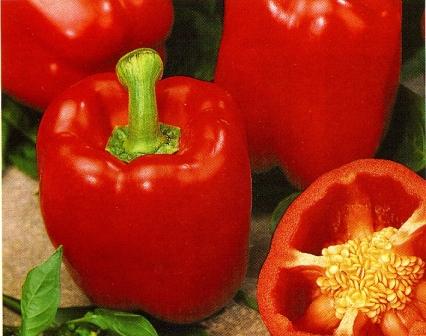 You may be interested in:
You may be interested in:Ivanhoe
Early pepper ripens in 105 days, the bush is small, the foliage is moderate. The fruits are similar to a smooth elongated cream-colored cone with technical maturity and red with biological. The weight of one vegetable reaches 140 g.

Dobrynya
The bush of the plant is standard, with moderate branching. The early ripe variety, before the first technical fruits appear, takes 88-92 days, has a stable crop - 11-14 kg. Pepper gains a red tint when ripe. Prismatic fruits, large, glossy on the surface.
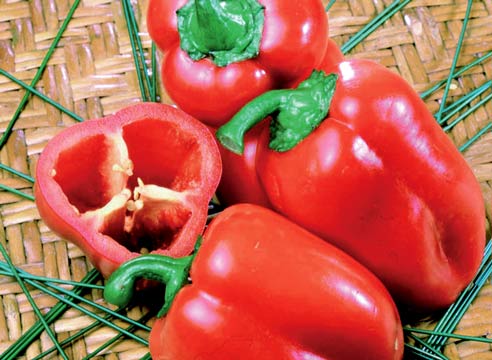
Lero
Early ripe hybrid, gives the first fruits after 90 days. The bushes are tall but compact. Vegetables are small, weighing up to 100 g, fleshy, wall thickness - 9 mm. The shape of the pepper resembles a heart, the color is bright red in ripe fruits. The hybrid is well adapted to weather changes and temperature changes, yields a yield of 8-10 kg from 1 m².
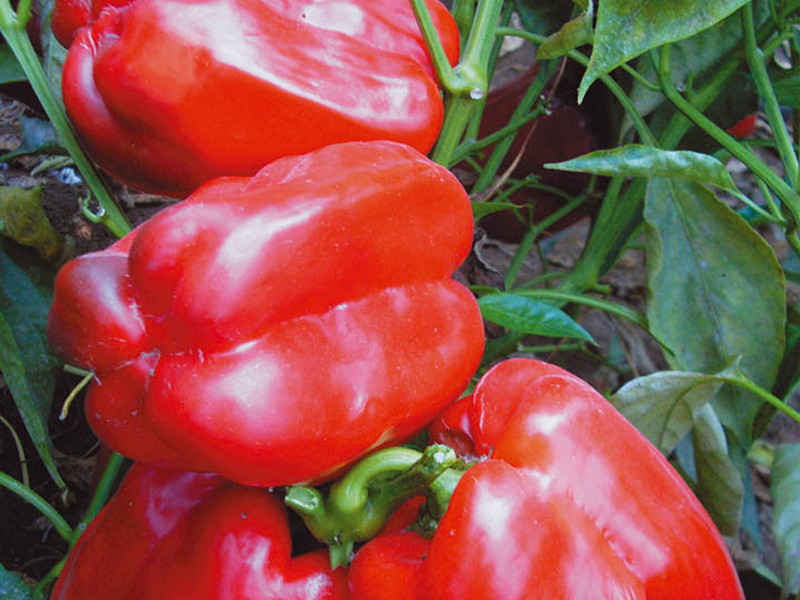
Mazurka
Hybrid pepper, which is resistant to environmental changes, mid-season, it takes 125 days to harvest, with a very short time between the technical and biological maturity of the vegetable. The fruits are thick-walled, red in color, have the shape of a prism, weight - over 150 g. It is characterized by high productivity.
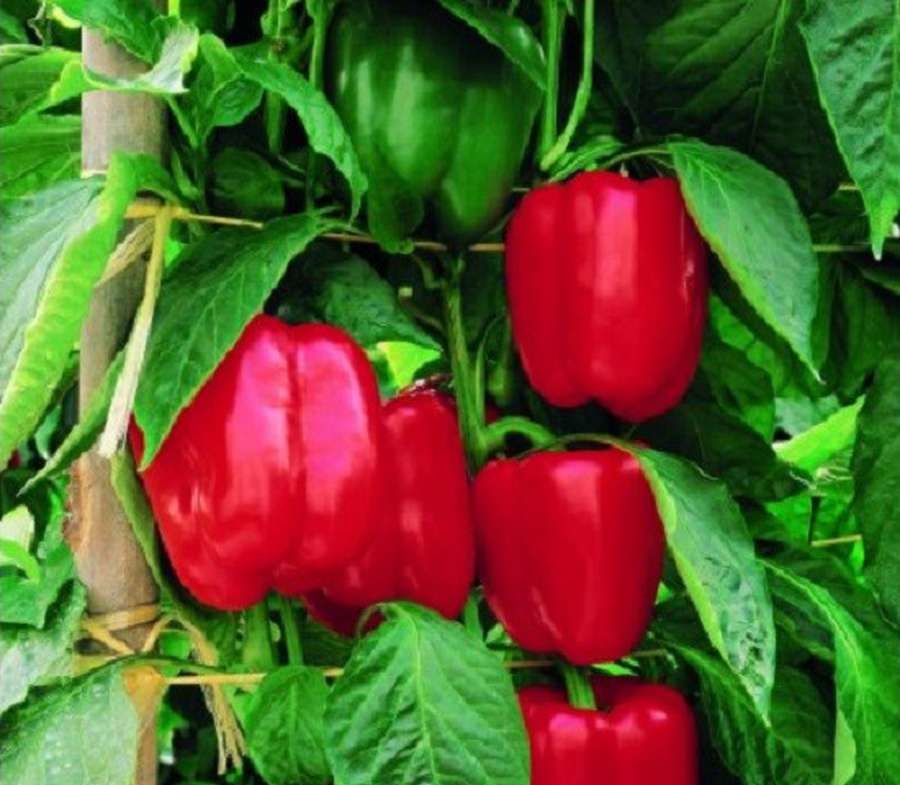
Mercury
Pepper ripens after 90-100 days, an early hybrid with low bushes, which are slightly more than a meter. With 1 m², you can collect more than 12 kg of large cone-shaped fruits, with noticeable strokes on a smooth surface. Vegetable length - 15 cm, weight - 150 g, wall thickness - up to 5 mm.
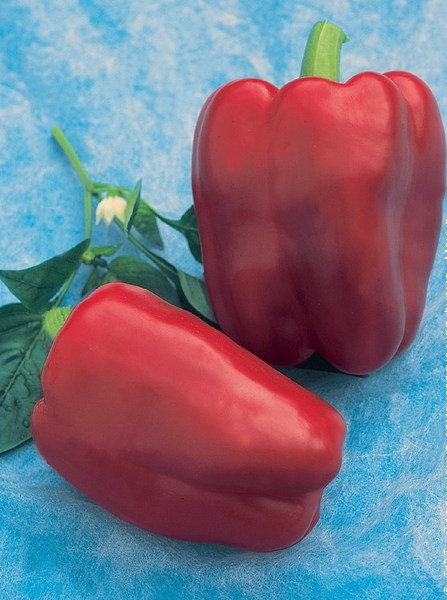
Flaming F1
A hybrid variety of pepper, which is ultra-early, the bush grows up to 2 m, it must be tied up for successful growth. Well adapted to temperature extremes. Gives red trapezoid fruits weighing 100-120 g with a pronounced aroma and taste.
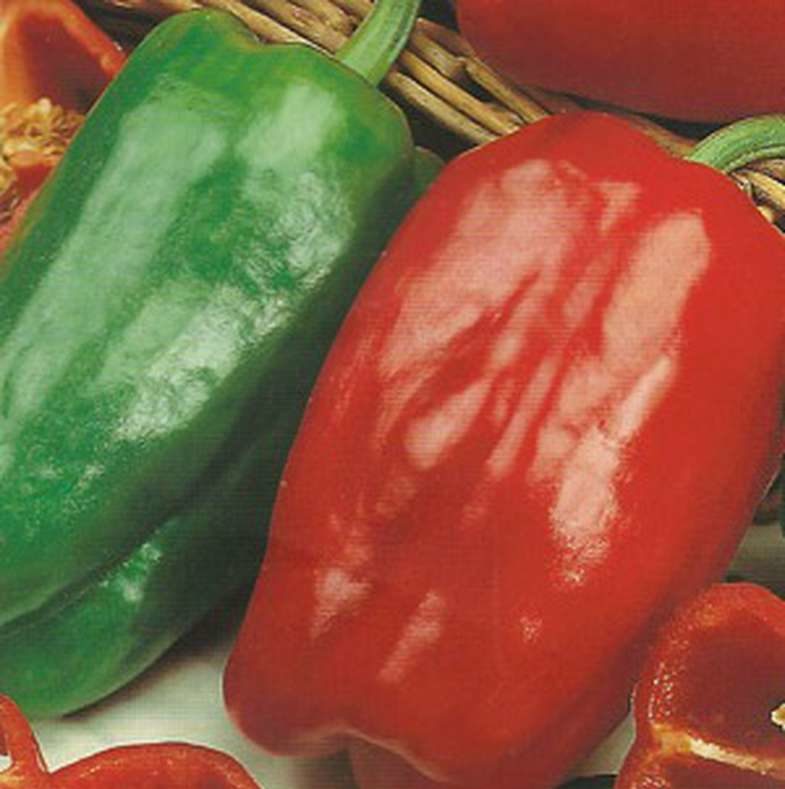
Spring
The plant is a tall, sprawling bush with dark green foliage. Ripe red fruits resemble a prismatic cone in shape, the weight of such pepper is 100 g, the wall width is 6 mm. The variety is popular due to its high yield, which is 10 kg per m².
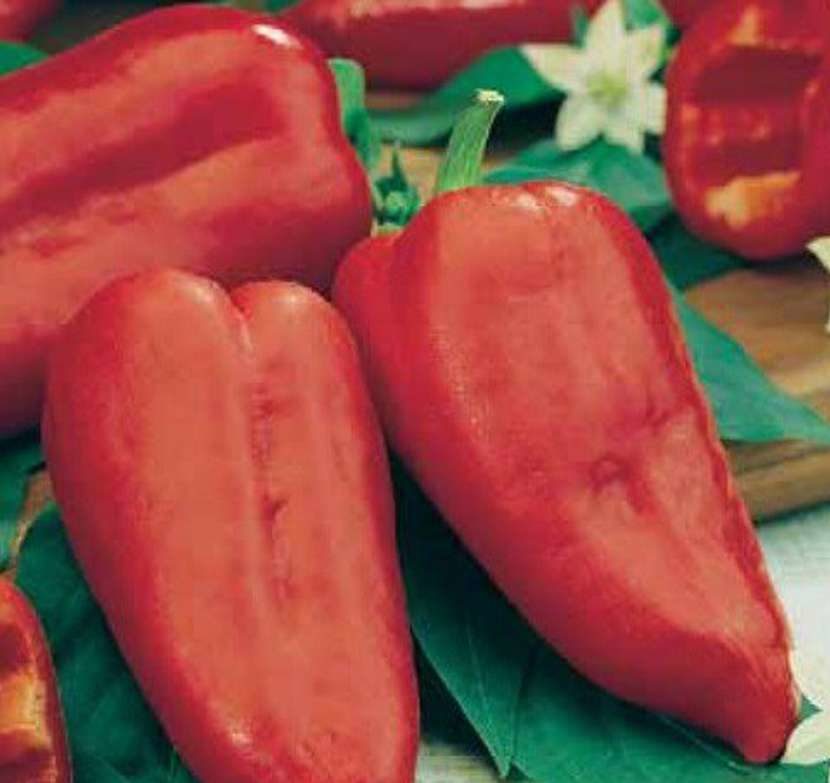
Ruza
Mid-season variety of pepper, which is suitable for cultivation exclusively in greenhouse conditions, as it ripens 140 days. The bush grows to 80 cm in height. Fruits of red color, rather large: reach 20 cm in length, their weight - 500 g, have an elongated shape. Ruza bears fruit well, but requires proper care and timely fertilizer.
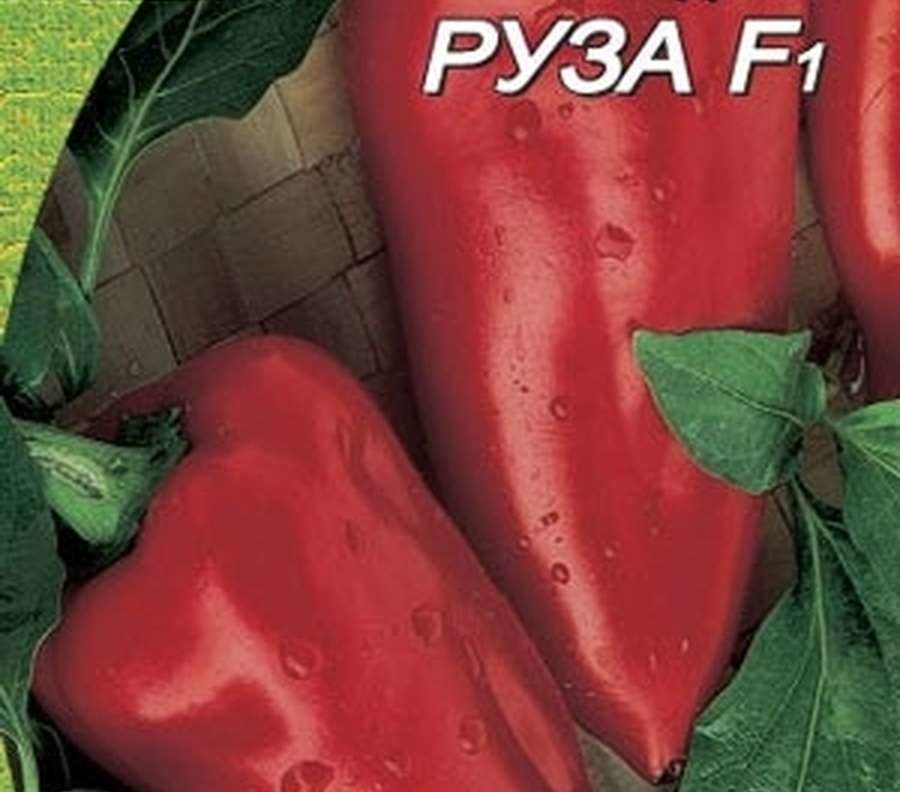
Triton
An early ripe variety, a bush of culture is low, up to 50 cm. A vegetable of the correct cone shape, yellow and red in different ripening periods. The thickness of the smelt is average: 4-5 mm, the weight of one pepper is 100-150 g. It is widely used in cooking in various cooking options.
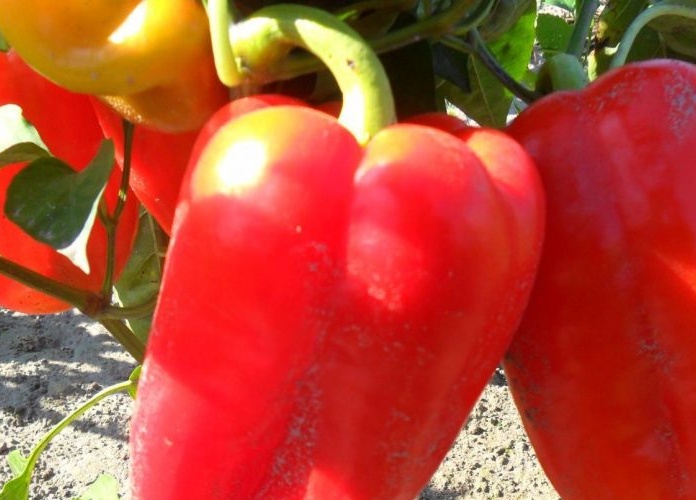
Chrysolite F1
A hybrid variety of pepper with large cone-shaped fruits weighing 160 g. The height of the bush reaches a meter, and the fruits are picked both green and ripe. The peel has a characteristic ribbing, acquires a red tint after ripening. The pericarp of a vegetable reaches 6 mm, which makes it possible to effectively use it in various preparations.
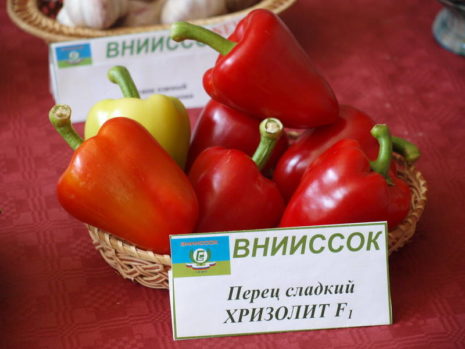
cabin boy
Technical maturity of this variety occurs on the 105th day, biological - on the 135th day. This is a determinant bush of a bouquet type, which gives 8-15 fruits that have the shape of a cone. Each size is on average 10 × 8 cm, weight is 150 g. The thickness of the pericarp is 6 mm, mature vegetables are red with a pronounced taste.
Common Growing Questions
Despite the mismatch of the region’s climate with the required parameters for pepper growth, there are many varieties that are well suited for the north-west of Russia and ripen without much trouble both in greenhouses and in beds.




 Calorie pepper stuffed with meat and rice - BZHU per 100 grams
Calorie pepper stuffed with meat and rice - BZHU per 100 grams Gorky pepper - the best varieties for open ground
Gorky pepper - the best varieties for open ground Hot pepper seeds - the best varieties for open ground and reviews
Hot pepper seeds - the best varieties for open ground and reviews Capsicum tincture for hair - how to use and reviews
Capsicum tincture for hair - how to use and reviews